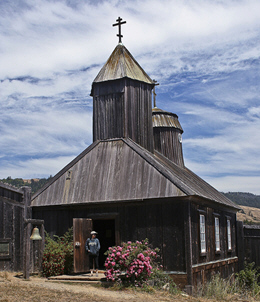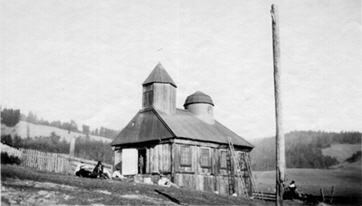
Page 2
stationary position-only the clapper moves on the end of ropes. Thus musical notes and melodies are achieved by controlling the swing of the clapper against the interior of the individual bells.
Galperin is also asking that the belfry be modified with appropriate openings and the bells be hung in the belfry and the interior be opened for historical accuracy. In 1897, Bishop Nikolai Ziorov and Father (soon to be saint) Sebastian Dabovich were appalled to find that the chapel had been turned into a barn. Ziorov noted the belfry "had a semblance of a cross." He was further saddened when looking at the belfry he saw "the bells had been taken by lovers of antiques." Eight years later in 1905 (one year before the 1906 earthquake) two Orthodox clerics, St. Tikhon and Father Theodore Pashkovskij, visited the chapel. They also describe the belfry. These observations by Ziorov, St. Tikhon, Pashkovskij and Dabovich, clearly show a belfry with bells existed during the Russian occupation.
Galperin is also asking that a fourth bell and bell hut be added inside the fort's compound. He has found written evidence that such a secular bell existed as early as 1817. This secular bell was used in lieu of clocks to notify residents of daily routines-breakfast, lunch, dinner and as an alarm for attacks, fire or as a fog alarm for sailing ships close to the Fort Ross cove.
Move To Add Bells At Fort Ross
Historical Accuracy Sought




Fort Ross Chapel with bell - 2010
Continued from Page 1

Fort Ross Chapel - circa 1918

Story By Daniel J. Demers - All Rights Reserved - Copyright 2010
©
Curtesy of: Russian River Times



